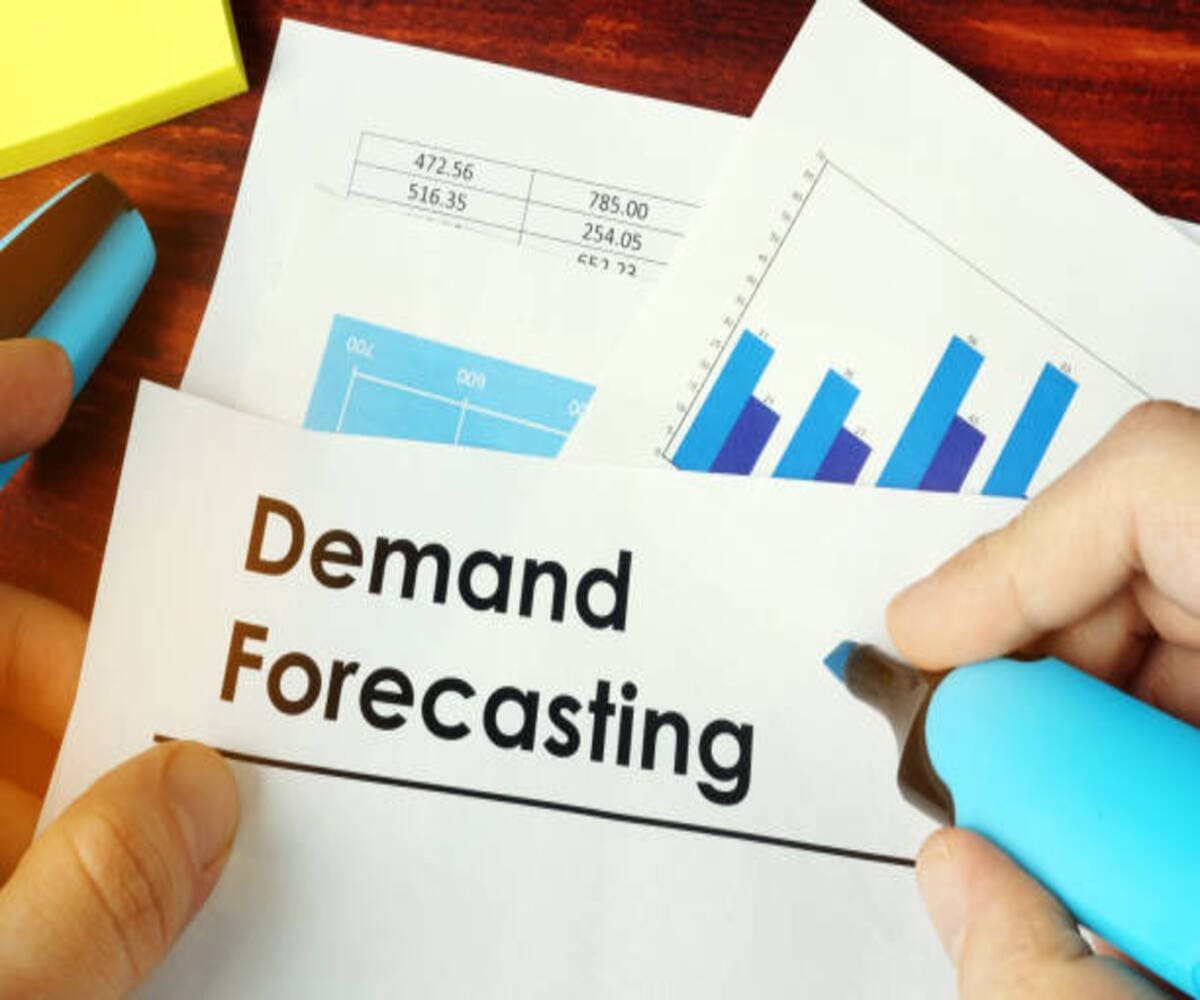1. Why Demand Forecasting is Crucial for Business Growth
1.1 What is Demand Forecasting?
Demand forecasting is the process of predicting future consumer demand for a product or service based on historical data, market trends, and economic indicators. It helps businesses:
- Optimize Inventory Management – Prevents overstocking or stockouts.
- Improve Production Planning – Aligns manufacturing schedules with market demand.
- Set Competitive Pricing Strategies – Ensures profitability by anticipating demand shifts.
- Enhance Marketing Campaigns – Targets promotions at the right audience at the right time.
Example: Retailers like Walmart use demand forecasting to stock the right products before seasonal shopping peaks.
Case Study: How Amazon Uses Demand Forecasting
Amazon’s AI-powered demand forecasting helps predict which products will sell more in different regions, optimizing warehouse stocking and delivery times.
Interactive Element: Infographic – “The Demand Forecasting Process: From Data to Decision-Making” (Visualizing the step-by-step forecasting journey).
2. Qualitative vs. Quantitative Forecasting Methods
2.1 Qualitative Forecasting: Expert Opinion & Trend Analysis
Qualitative methods are used when historical data is unavailable or insufficient. These methods rely on expert insights and market observations.
- Delphi Method – Experts provide independent forecasts, and their responses are refined through multiple rounds of feedback.
- Market Research & Consumer Surveys – Businesses gather customer insights to predict future demand.
- Trend Analysis & Scenario Planning – Evaluating social, technological, and economic changes to estimate demand shifts.
Example: Startups launching new products rely on focus groups and expert opinions to estimate demand.
2.2 Quantitative Forecasting: Data-Driven Approaches
Quantitative forecasting uses mathematical models to predict demand based on past data and statistical analysis.
- Time Series Analysis – Uses past sales data to predict future demand (e.g., moving averages, exponential smoothing).
- Regression Analysis – Determines how factors like price, advertising, and economic conditions impact demand.
- Machine Learning & AI Forecasting – Algorithms analyze big data to provide real-time demand predictions.
Example: Airlines use time series forecasting to predict ticket demand and adjust pricing accordingly.
Interactive Element: Poll – “Which Forecasting Method is Most Reliable? Expert Opinion vs. AI-Driven Predictions?”
3. Using Big Data for Business Decision-Making
3.1 The Role of Big Data in Demand Forecasting
Big data enables companies to analyze massive amounts of consumer behavior, social trends, and real-time market conditions. It enhances:
- Customer Segmentation – Identifies demand patterns among different consumer groups.
- Predictive Analytics – Uses past data to predict future purchasing behavior.
- Automated Decision-Making – AI-powered systems adjust forecasts dynamically.
Example: Netflix uses big data analytics to recommend content, ensuring viewers stay engaged based on predicted demand for certain genres.
3.2 How Businesses Leverage AI & Technology for Forecasting
- Google Trends & Social Media Analytics – Tracks real-time demand shifts based on search and engagement data.
- IoT & Smart Sensors – Monitors supply chain data to predict shortages or excess inventory.
- Automated Demand Planning Tools – AI-driven software like SAP and IBM Watson provide real-time forecasting insights.
Case Study: How Walmart Uses AI for Demand Forecasting
Walmart integrates AI and machine learning to analyze millions of transactions daily, ensuring stores stock only the products in high demand.
Interactive Element: Quiz – “Can You Predict the Next Big Market Trend?” (Users analyze data and make forecasting decisions).
4. Case Study: Demand Forecasting in Real Business Scenarios
4.1 The Impact of Demand Forecasting on Different Industries
- Retail: Forecasting ensures the right inventory levels during peak seasons (e.g., Black Friday sales).
- Manufacturing: Predicting demand prevents overproduction and excess inventory costs.
- Healthcare: Demand forecasting ensures medical supplies and vaccines are stocked efficiently.
- Technology: Companies like Apple use forecasts to align production with anticipated iPhone sales.
Example: Zara’s fast fashion model uses real-time demand forecasting to produce and stock new clothing items just in time, reducing waste and maximizing profits.
Interactive Element: Live Business Simulation – “Forecast Demand for Your Business!” (Users predict demand based on real-world scenarios).
5. Managerial Perspective: How Executives Use Forecasting for Business Expansion
5.1 How Business Leaders Use Data-Driven Insights for Expansion
Executives rely on demand forecasting to:
- Decide Market Entry Strategies – Companies use predictive analytics to assess demand in new locations before expanding.
- Align Production with Consumer Demand – Businesses adjust supply chains to avoid overproduction or shortages.
- Maximize Advertising ROI – Predicting high-demand periods ensures marketing budgets are spent efficiently.
Example: Starbucks uses geo-based demand forecasting to open new stores in high-demand areas, ensuring success.
5.2 The Role of Technology in Modern Forecasting Methods
- Cloud-Based Forecasting Tools – Platforms like SAP, Oracle, and IBM Watson improve real-time forecasting accuracy.
- AI & Machine Learning Predictions – AI models refine forecasts based on live market trends.
- Blockchain for Transparent Supply Chains – Ensures real-time demand tracking across global suppliers.
Case Study: Nike’s Digital Demand Forecasting
Nike leverages AI-driven demand forecasting to track online shopping patterns, optimizing product launches and supply chain efficiency.
Interactive Element: Q&A Webinar – “How Executives Use AI for Demand Forecasting?”
6. Key Takeaways: Why Demand Forecasting is Essential for Business Success
- Forecasting Prevents Business Losses – Reduces waste, improves efficiency, and enhances profitability.
- Big Data & AI Improve Accuracy – Businesses can predict demand shifts with real-time data insights.
- Industry-Specific Forecasting Ensures Growth – Retail, healthcare, and tech companies thrive by leveraging predictive models.
- Executives Rely on Data-Driven Insights – Forecasting guides expansion, pricing, and marketing strategies.
Call-to-Action: Want to master demand forecasting? Enroll in SignifyHR’s Data-Driven Business Strategy Course today !




